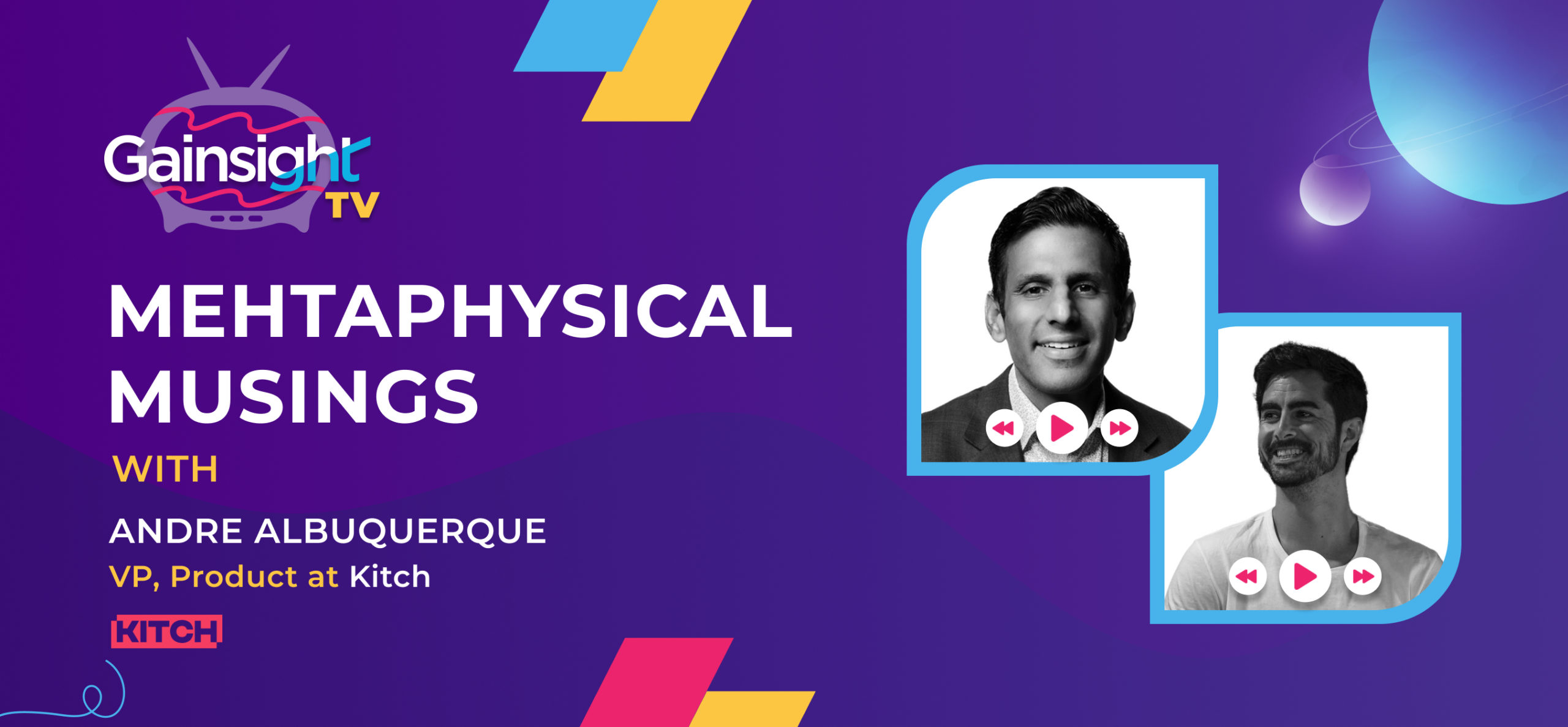Today’s SaaS product managers need to be problem solvers at heart—wearing multiple hats, keeping teams on track, and focusing on metrics.
On the latest Mehtaphysical Musings, I spoke with Andre Albuquerque to find out what he thinks makes a successful Product Manager (PM). Andre is co-founder and Vice President of Product at Kitch, which helps restaurants manage delivery orders, track couriers, and update menus across delivery apps from a single platform. He’s also the founder of One Month PM, a platform that offers online courses for building product management knowledge and skills.
We discussed Albuquerque’s passion for making products better and what PMs can do to inspire the teams that create innovative SaaS products. Watch the entire episode or read my key takeaways below:
A mayor, a coach, and a union leader manage a product…
I know it sounds like I’m about to tell a bad joke, but this is serious! A successful product manager needs to be able to wear many hats, and Albuquerque highlighted three in particular: those of a mayor, a coach, and a union leader.
“My favorite hat is the mayor hat,” Albuquerque says. “You’ve got to wear a hat of someone rallying the village—your team at work. You’ve got to get them energized and hopeful. The mayor hat gives you the power to inspire your team to build the unsexy things to get us to the sexy vision.”
Albuquerque believes product leaders also have to act like sports coaches. He says, “Be realistic that things change. Never sugar-coat reality. That’s what the coach hat will tell you.” And, as any coach will tell you, it’s all about preparation, preparation, preparation. One of Albuquerque’s favorite quotes that highlights this mantra is from Chris Voss’s book Never Split the Difference, “You fall to the level of your preparation.”
Perhaps the most important hat a PM needs to wear is that of a union leader. A union leader represents the needs of workers, and the PM represents the needs of product users. “In a situation where people are reassessing their choices and decisions, especially around software, they will vote with their wallets,” Albuquerque says. “If they don’t feel represented by your company’s decisions, they’ll turn on you.”
Swerve around roadmap detours to stay on track.
Bad products come from bad roadmaps, according to Albuquerque. In a recent blog, he points out that ineffective roadmaps typically start with a solution-first focus on building features, or a shopping list from executives who just want to build something. Instead, roadmaps should focus on customer outcomes. Unfortunately, many PMs deviate from roadmaps too quickly. Albuquerque says PMs need the confidence to resist making immediate tweaks.
Furthermore, he recommends leveraging feedback from multiple sources to make informed, incremental changes. “Great roadmaps accommodate nuance,” Albuquerque says. Such nuance mixes and matches information from app usage data, customer feedback, and business stakeholders. “The data that you get from understanding how customers are using your product has a massive impact on your ability to make great decisions.”
The story is in the metrics.
In the product-led growth (PLG) business model, user acquisition, expansion, conversion, and retention are driven primarily by aligning the teams that support the product. However, sales, marketing, and engineering each have their own set of key performance indicators (KPIs). Plus, there’s the ongoing collection and assessment of evolving customer behaviors.
Product managers have to understand which internal metrics drive business outcomes, put them at the core of product strategy, and create company-wide alignment. Then they have to synthesize that knowledge with their understanding of customer stories.
“Making stakeholders successful, because they have a process to understand what matters for the company, will make the company successful,” according to Albuquerque. Regarding customers, he continues, “Producing great products is about listening to customer stories and reading between the lines.”
PLG principles also redistribute profit and loss (P&L) responsibilities. Product teams can no longer add product features for the sake of it, they have to create measurable value.
In today’s business environment, where growth at all costs is receding in favor of efficient, durable growth, net revenue retention (NRR) is an important measure. “You can hack growth, but you can’t hack retention,” Andre says. To the extent that NRR quantifies customer loyalty, it provides an important lens into an organization’s continuous product-market fit (PMF).
You are what you eat.
Finally, the most successful SaaS companies learn from their peers. Or, as Albuquerque puts it, “To cook great food, you gotta have tasted great food.” In other words, some companies have excellent engineering organizations, others excel at research, and some have branding and messaging that keeps customers engaged. Their lessons can help you rise above your own expectations.
“‘Great’ is not just about the features you add or the quality of your product,” Albuquerque points out. “Leaders need to not only show what ‘great’ looks like for the products they’re building, but be great at the small things: great one-on-ones, great performance reviews, great celebrations, great messaging. All of these will inspire you to demand greatness from you.”
At Gainsight, we’re big believers in the need to connect your customer success, net retention efforts, product experience, and customer community together. When interconnected, these different growth strategies lead to long-term durable growth.
To learn exactly how to implement a durable growth strategy at your organization, watch our Durable Growth Playbook webinar series.

